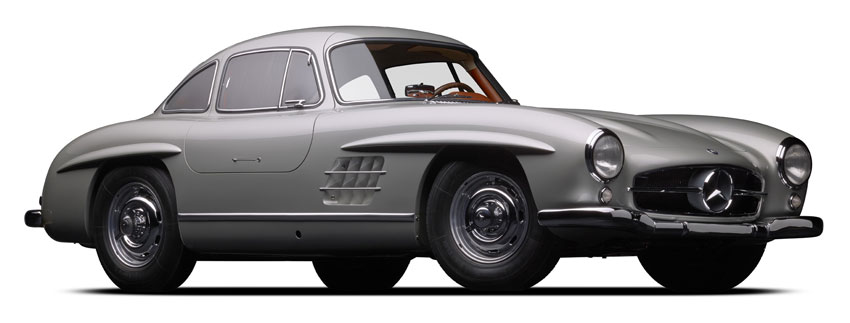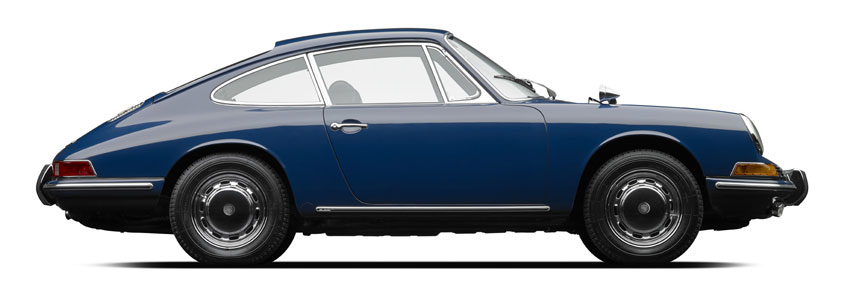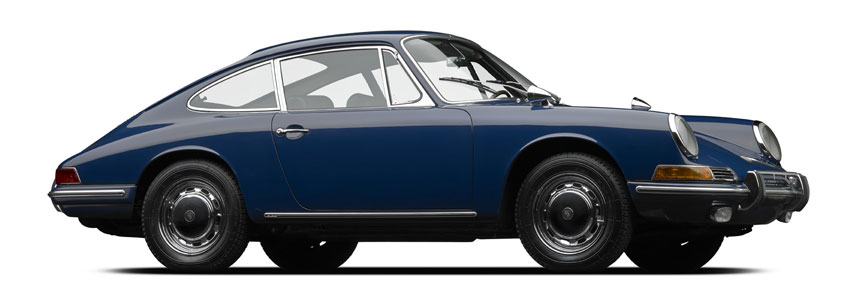Amelia Island Concours founder Bill Warner is well known for his fascinating, and sometimes provocative Saturday afternoon seminars. If there has ever been any criticism, some suggest at times he has been too ambitious, inviting too many interesting people to participate and leaving, at the end, everyone wanting more than was possible.
For the 2015 event, Warner struck the perfect note. His theme – Design DNA of Iconic Cars – sold out and completely filled the ballroom. There are some designers who suggest that using the term DNA – deoxyribonucleic acid – an organic hereditary molecule that the National Institute of Health says, “contains the biological instructions that make each species unique” to describe an automobile’s design heritage is inaccurate. Not so with Warner’s three speakers: Gorden Wagener, head of advance strategic design Mercedes-Benz; Grant Larson, chief of exterior design Porsche; and Ed Wellburn, vice president global design General Motors. Each hewed closely to the theme that the design of their early cars became icons that make them instantly recognizable and that influences and infects the shapes and forms of their cars today. Stuart Reed, chairman of transportation design at the Art Center College of Design moderated the trio.
Wagener, a vigorous and enthusiastic cheerleader for his corporation’s designs, spent his portion of the program comparing Mercedes’s current 2016 SLS AMG with the 300 SL gullwing of the 1950’s. Larson outlined the evolution of Porsche’s 1965 911 to its current 991, exemplified by a GT3 variant on the ballroom floor. Ed Wellburn took on the more challenging task of finding links between the trend-setting two-door two-seat “longer, lower, wider” Buick one-off that his predecessor Harley Earl designed for his own use, the 1938 Buick Y-Job, with Buick’s latest concept Avenir, a four-door four-seat sedan.
“You cannot create an icon, just like that,” Wagener said while large projection screens displayed several views of a Gullwing. “A car becomes an icon over time.” Successful car design, he said, “is about emotion and intelligence.” He acknowledged that his job involved taking care of Mercedes-Benz’s heritage and being responsible about its future.

“A sense of purity is central to our design philosophy,” he added, introducing a film that ended – somewhat enigmatically – with a lingering image of a glass of water. “You cannot plan an icon, you cannot design ‘icon-ization’, Wagener explained. “It happens over time. We try to capture what is the essence in three different things: fascination, timelessness, and inspiration.” He acknowledged that in Mercedes-Benz’s adherence to the design tenet “form follows function,” his designers start their process with the consideration of proportions and balance, and making certain those are “absolutely perfect.”
Grant Larson spoke of the family tree of Porsche and acknowledged that while “the 914 and 928 were both excellent cars, they really helped us find our lineage on the way to establishing a stronger identity.” A film clip and narrator a moment later provoked laughter among some in the audience: “The very last car built will be a sports car,” a voice intoned as it recited a little known quote of Ferry Porsche’s. “Ferry Porsche is no longer with us to explain that,” Larson quipped, “but I think he meant that no matter what we do, it will always be a sports car no matter what category it fits.”
Larson drew on Porsche’s legacy in racing as an ongoing source of inspiration for vehicle design. “Every time we do a car, we break it down into three phases, starting with architecture which is the proportions of the car and its visual message, the styling or design look., and finally the details, “the small things that make a Porsche a Porsche.” To illustrate the architecture, he slowed images of cars with a grid overlay that clearly emphasized the proportional concerns of vehicle height to width, as well as length, overhangs, the taper of the rear end, “basically, the physical presence the car gives off in a ‘down the road’ sense.”

“The 911,” he acknowledged, “because it has become such an established car, has become the foundation for our identity. In German, the expression is Marke Identität, which translates to ‘marque identity’, and this is what makes you instantly recognize that the car is a Porsche, and not only that, which Porsche it is. We take certain features and apply them to our other cars to give them this unmistakable Porsche identity. Porsches have a very wide body with a tapered cabin, and these characteristics apply to all our vehicles.” A video Larson showed next graphically demonstrated another characteristic – the roof “fly line” – the remarkably similar long arcs from the top of the windscreen to the rear of the vehicle, whether it is 911 or Macan or Panamera. “Just one glance at the vehicle,” the narrator intoned, “and you can feel the unique Porsche design DNA.” Or as Larson described it, Porsche’s “design authenticity.
“Whenever I start the design of a new car, do I have to follow all that stuff,” Larson asked rhetorically.”No. But it serves as an orientation. And if you deviate, you must be very careful.” As he summed up, he brought a laugh: “You notice our cars are always soft, round shapes. Sensual is a perfect word for that. But it’s always our goal to develop, to design cars that are fun to wash by hand.”

Ed Wellburn complimented his colleagues on the stage by saying, “Mercedes-Benz and Porsche – and let me add in there Corvette – are brands that build on the history of their brands but do it in a very contemporary way.” He then quickly admitted that his presentation choice, Buick “has not always been faithful to its design language, to its DNA. When it has been, great things have happened: Riviera! A lot of emotion. A lot of energy. And when they have strayed, the cars have not had that same romance and energy, the flow of line.” Wellburn’s presentation centered on the Y-Job, outlining each design and styling innovation on this car and explaining how ideas that originated on that concept influenced not only Buick but all GM design for decades. The “sweep spear” that first appeared on the Y-Job is resurrected for the concept Avenir.
“As I describe Buick design,” Wellburn explained, “there is no beginning or end. It just flows like an artist’s brush stroke. From thin to thick. You just can’t ‘draw” a sweep spear on the side of car and say it’s a Buick. It has to be an integral part of the form, the shape, the tapering surfaces through the vehicle.”
At the end of the session, an audience member asked the three designers to characterize the differences between and successes of German or European design, Japanese design, and American design. While Wagener reemphasized design purity, and Larson stressed the sense of engineering excellence that accompanies particularly German design, Wellburn allowed as how when American companies have tried to do European design, they have seldom succeeded “because an American who wants European design will buy a European brand. To develop a car that is international in size but has its roots in America in style and design, is really the best approach for an American brand.”
Photos courtesy Michael Furman. © 2015 All Rights Reserved




